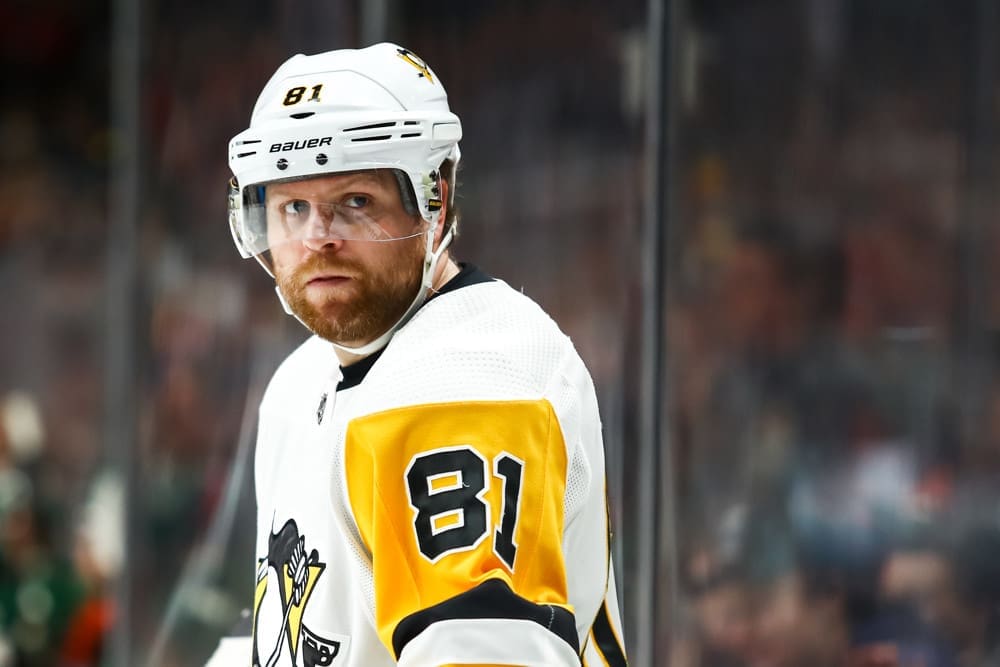Penguins
Molinari: Physical or Not, Kessel’s a Hit; NHL Wardrobe Malfunction

Phil Kessel had himself an evening Tuesday.
He became both the NHL’s ironman by playing in his 990th consecutive game and the 106th player in NHL history to score 400 career goals. (A bit ironic that the ironman record Keith Yandle needed a 1,109-game career to set only lasted for a few months, isn’t it?)
Kessel, whose passing and playmaking often have been underrated, also has 559 assists, tying him with Alexander Mogilny for 120th place on the league’s all-time list.
And there’s every reason to believe Kessel, who spent four seasons with the Pittsburgh Penguins, will move up both the goal and assist rankings before he gives up the game.
He also will move up the all-time hits list.
He just won’t do it very fast. Or go very far.
Kessel, you see, has been credited with 193 while playing 1,212 games in the league. To put that total in perspective, consider that 30 players recorded more hits during the 2021-22 season, even though only two of them (Luke Kunin of Nashville and Calgary’s Milan Lucic) appeared in 82 games.
(For the record, Kessel’s total includes 43 in 328 games with the Pittsburgh Penguins.)
There are some who make a straight-line connection between Kessel’s durability — his streak began Nov. 3, 2009 — and his lack of physicality, and it’s true that he probably wouldn’t have gone nearly 13 seasons without missing a game if he launched his body into an opponent every time he went over the boards.
But such a simplistic assessment ignores a few realities, like how few players perform at such a high level that they stick in the league anywhere near as long as Kessel has. And that players miss games for reasons other than injuries, including illness and personal/family issues.
And, most importantly, that while Kessel doesn’t often initiate contact, opponents aren’t shy about playing the body on him. Or trying to, anyway.
Kessel has a knack for minimizing the impact, literally and figuratively, of checks he receives. That’s on those occasions when he doesn’t manage to avoid the hit altogether.
Sure, playing a skill-based style has helped to make his ironman streak possible. So has flat-out good fortune; Kessel doesn’t kill penalties or make a habit of blocking shots, but it only takes one puck hitting a player in the foot or being deflected into his face to knock him out of the lineup.
However, none of that detracts from the magnitude of his accomplishment.
Kessel might look more like an office worker than a professional athlete, but there aren’t a lot of accountants or secretaries or sales people who make it to work 990 days in a row, either.
Phil Kessel has. And he should be celebrated for it.
Canucks getting defensive?
The Penguins didn’t have a say in scheduling it, of course, but after absorbing a pair of humbling defeats in Alberta, they likely are relieved that their next game is against Vancouver, the NHL’s only winless team.
The Canucks (0-5-2) had hoped to build on the success they had during the second half of last season, but have sputtered and stumbled through the early weeks of 2022-23.
They reportedly are in the market for a defenseman, and have been mentioned as one of the clubs interested in Carolina’s Ethan Bear.
However, given that GM Patrik Allvin and president of hockey operations Jim Rutherford have extensive knowledge of the Penguins — and that the Penguins have nine NHL-caliber defensemen in their organization — it certainly seems possible that Vancouver will at least ask Ron Hextall if he’s interested in dealing one.
If that happens, it will be interesting to see how that familiarity would influence any trade talks that might ensue. Do Rutherford and Allvin know so much about Penguins personnel that it would be impossible for Hextall to get them to overpay, or would they be so smitten with a particular player that they would part with more (or better) assets than another team might?
Of course, the Pittsburgh Penguins and Vancouver have about 73 cents worth of salary-cap space between them, so actually constructing a deal might be extremely difficult, even if they are inclined to discuss one.
Uniform code of conduct
While the NHL has more pressing concerns — starting with its apparent tolerance of hits to the head and refusal to publicly acknowledge the connection between those and long-term brain issues — it really should reconsider its policy of having road teams wear their white sweaters.
Why not give home-team fans the opportunity to see a variety of sweater colors — the reds of Chicago and Montreal, the black of Boston, the green of Minnesota and Dallas, etc. — rather than 31 variations on the white theme?
If a team occasionally wants to wear its non-white sweaters at home, presumably to goose sales of a new third jersey or something of that sort, fine. Most opponents will cooperate, especially if it doesn’t involve lugging around an extra set of equipment during a long road trip.
But the point is that the NHL has some classic (and creative) sweaters, and the paying public should be allowed to see them in full color. The way they were intended.












